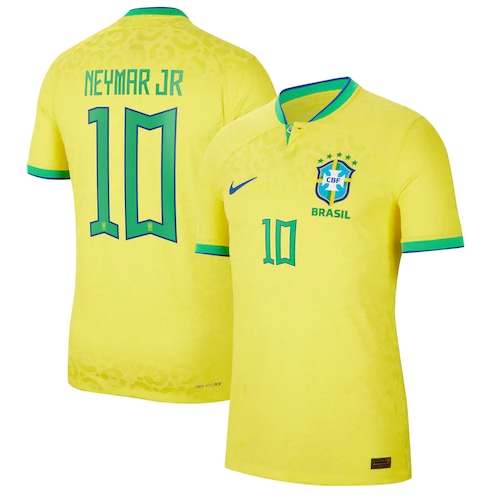The minute the draw happened, I knew I had to get a new Brazil jersey. The proper one. Not some knock-off garbage. But let me tell you straight up, trying to buy a real World Cup jersey nowadays is like trying to find a needle in a swamp full of slightly smaller, slightly dirtier needles.

I booted up the laptop and stared at the screen, and the first thing I realized was that 90% of what’s out there is manufactured for one purpose: to fool you. These fakes aren’t the cheap, plasticky stuff from ten years ago. They’re getting good. They replicate the packaging, they mimic the tags, they nail the stitching pattern. That’s where I started my process—not by buying, but by studying the enemy.
My first step was to scour every major sports forum. I waded through hundreds of threads from collectors who’d been burned. I compared photos side-by-side, zooming in on things I never thought mattered. I focused on three things I had to master: the Nike Vaporknit pattern, the official neck tags, and the retail packaging.
The Practice: Learning to Spot the Lies
I literally bought two known fakes just to rip them apart. Yeah, I spent good money on literal garbage, but I needed to feel the difference. This wasn’t cheap, but it fast-tracked my education.
- The Crest: I grabbed the emblem and felt it. On the real one, the crest isn’t just sewn on—it’s heat-pressed with a subtle, rubbery texture, and the weave underneath is tight. The fake felt a little too thick, almost puffy. I found that on the legit jerseys, if you flip the jersey inside out, the backing is almost invisible. The fakes often have a messy glue pattern or visible stitching on the inside.
- The Neck Tag Codes: This is a major tell. I discovered that every Nike jersey has a nine-digit product code (like XXX-XXX). The real process: I found a seller, asked for a clear photo of the code on the small internal tag, and then I cross-referenced that specific code with the official Nike code for the exact jersey on collector databases. The scammers use codes from other shirts, or the picture is always too blurry. I stopped dealing with anyone who wouldn’t send a crisp, clear photo of that tag.
- The Vaporknit Material: This is the hardest one. The real Vaporknit jersey is almost impossibly light, and it feels slightly rough to the touch, almost like a thin mesh. When you hold it up to a light, you can almost see through it. The fakes? They feel slick, heavy, and too soft. I learned to look at the specific texture pattern—it’s a repeating geometric design, and the fakes always get the scale slightly wrong. They stitch it too wide or too narrow.
Once I mastered these points, the hunt became simple. I ignored the big marketplaces. I focused only on highly-rated specialty resellers and, honestly, eBay sellers who had long-term, specific jersey history. I executed the code check, the material check, and the crest check. It paid off, and I secured a genuine one for myself. Took me three weeks of non-stop searching, but I got it.
I Know All This Because My Wallet Bled
You might be asking why I went through all this trouble. Why not just buy the cheap one and be done with it? Well, I tell you this whole detailed story because I paid the price for ignorance years ago.

Back in 2014, when the World Cup was in Brazil, I traveled down there. I wanted a proper shirt. I paid a street vendor what I thought was a great price for an R9 throwback, an absolute beauty. I felt like a king. Fast forward to a year later, I was showing it off to a hardcore collector buddy of mine. He took one look, laughed, and pointed out the crest was made of cheap plastic and the Nike swoosh was sewn on crooked.
I brush it off. “It’s a souvenir,” I told myself. Then, a few months later, I washed it, and the entire number on the back peeled off and stuck to the drum of the machine. The dye ran and ruined three other shirts. That’s when the shame hit me. I spent triple what I should have on a piece of trash that destroyed other clothes.
But the real kick in the gut? My old boss found out I owned a fake jersey and used it as an example of my “lack of attention to detail” in a performance review that cost me a bonus that year. He pointed to that ridiculous number peel-off incident, even though it had nothing to do with my job. He was a piece of work, always looking for a reason to cut costs, and he screwed me over using a cheap, fake shirt as his excuse. That’s the kind of petty garbage you deal with in the corporate world.
I quit that job shortly after, found something better, and vowed I would never get fooled again—by a boss or by a plastic-crested jersey. That fake R9 shirt is still stuck in my memory, not as a souvenir, but as a pricey lesson. That experience drove me to master this stuff. It made me an expert in the simple details that the scammers always miss. So, when you follow this guide, you’re not just buying a shirt; you’re spitting in the eye of the cheap, corner-cutting, fake-selling world. You’re getting the real deal, because I did the hard work and got burned so you don’t have to.
